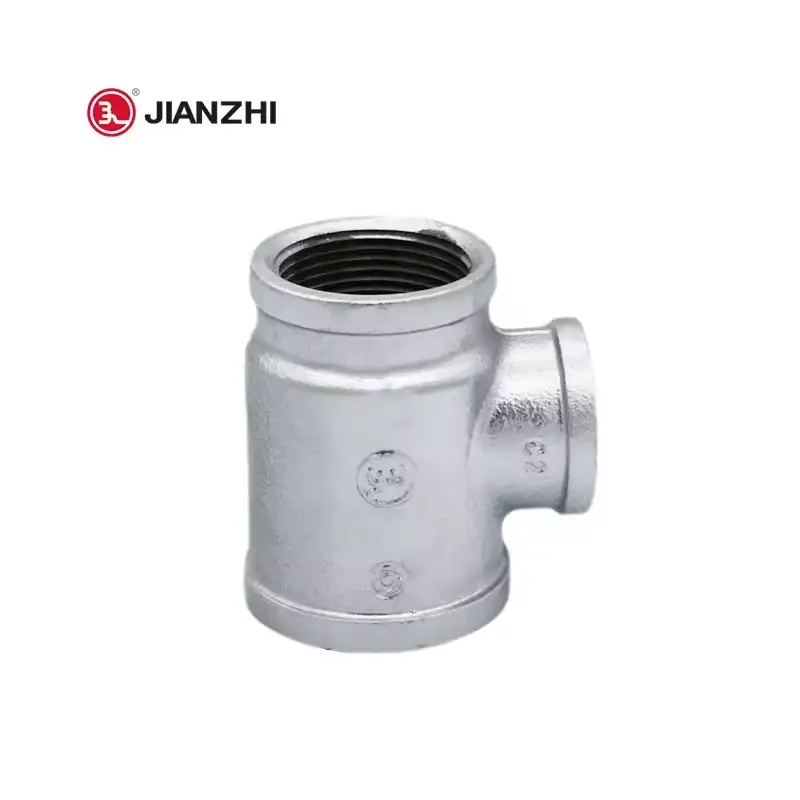In global engineering procurement, unified and authoritative industry standards determine whether pipe fittings can operate safely, be interchangeable across regions, and be successfully accepted. If the designer, purchaser, and manufacturer are not aligned on the standards, on-site rework, leakage, and compliance risks will increase. The US ASME B16 series has a far-reaching impact on dimensions and connections; ASTM is responsible for material and performance testing; ANSI/ISO’s international mutual recognition promotes global circulation; many industries also cite API, ISO, and regional standards.

1. A quick look at the standard system: materials, dimensions, threads, and application scenarios must correspond
Multiple levels of standards are often cited simultaneously in engineering:
- Material Specs: specify chemical composition, mechanical properties, heat treatment, and testing. Such as ASTM A234 for carbon steel/alloy steel pipe fittings for medium and high temperature pressure piping systems.
- Dimensional/Structural Standards: specify the dimensions, wall thickness range, and markings of elbows, tees, reducers, etc.. Such as ASME B16.9 for factory-made butt-welded pipe fittings.
- Thread connection standards: nominal size, thread angle, taper, allowable tolerance. Such as ISO 7-1 pressure-tight threads, used in conjunction with ISO 49 (malleable cast iron threaded fittings).
- Industry application standards: API 5L is commonly used in long-distance oil and gas pipelines, and is cross-referenced with the ASME/ASTM material system. Check the interchangeability level when purchasing.
2. Core standards related to commonly used pipe fittings worldwide
①. ASME B16.9 Factory-Made Wrought Buttwelding Fittings
Applicable to NPS 1/2~48 (DN15~DN1200) butt-welded elbows, tees, reducers, heads, etc.; specifies dimensions, tolerances, tests, and markings; used in conjunction with B31 pipeline specifications.
②. ASTM A234 / A234M (Carbon Steel and Alloy Steel Pressure Pipe Fittings Material Specification)
heat-treated Covering seamless or welded pipe fittings, suitable for medium and high temperature pressure pipes and pressure vessels. Matching with ASME B16.9, B16.11, and MSS standards; the material must be killed steel and properly heat-treated and tested.
③. ISO 49 Malleable Cast Iron Fittings Threaded to ISO 7‑1
Specifies the design, performance, pressure, and temperature limits of malleable cast iron threaded fittings. Applicable sizes 1/8 to 6; used to transport liquids and gases; requires ISO 7‑1 threads.
④. ISO 7‑1 Pipe Threads Where Pressure‑Tight Joints Are Made on the Threads
Specifies the thread type, size, and tolerance of tapered threads (R, Rc, Rp) for pressure sealing; emphasizes the use of sealing media; cannot be mixed with non-sealing ISO 228 threads.
⑤. API 5L Specification for Line Pipe (Oil and Gas Transmission Trunk Line)
Provides the size, material, grade, and marking requirements of steel oil/gas pipelines. It is widely used in the oil and gas industry, and some grades are cross-over and partially interchangeable with ASTM/ASME pipes. Procurement requires checking the project requirements.
3. How to use the standard in selection and procurement?
- Step 1: Identify the system. The NPS (imperial nominal size) in the design drawing must be converted to DN (nominal diameter); ASME B16.9 clearly states that NPS corresponds to international DN, and procurement cannot be confused.
- Step 2: Match materials with working conditions. If the system operates in a medium-high temperature and pressure environment, select a material grade that meets ASTM A234 (or A403, etc.), and then place an order according to the ASME size series.
- Step 3: Thread compatibility. ISO 7‑1 thread angle is 55°, taper is 1:16; NPT thread angle is 60°, and the thread shape is different; they cannot be directly mixed, otherwise the sealing risk is high.
- Step 4: Industry joint use. Pipes for oil and gas projects are often based on API 5L, but downstream connection flanges/pipe fittings refer to ASME B16; double verification is required for procurement.
4. The adaptation of Jianzhi pipe fittings to mainstream standards
Jianzhi Group focuses on the production of malleable cast iron, galvanized, and black pipe fittings. Its products cover elbows, tees, unions, plugs, sleeves, reducers, and other specifications, which are widely used in water, gas, oil, fire protection, and HVAC systems. The company has established a complete quality system for materials, galvanizing processes, and thread processing, and can supply according to NPT, BSPT, ISO thread, and multi-national standards to provide supporting services for cross-regional projects.
Our galvanized pipes are made of forgeable cast iron and then hot-dip galvanized after annealing. The zinc layer provides a barrier and sacrificial protection, which is suitable for wet and outdoor working conditions. It is suitable for systems with high requirements for water, gas, and corrosion resistance.
For pressure resistance and structural scenarios, our black pipe fitting series maintains material strength and machinability, suitable for industrial pipe networks, HVAC, and gas branches. Customers can specify the thread system or surface treatment according to the project, and can request a test report.
5. Cross-border Project Procurement Checklist (Practical)
| Inspection items | Key Points | Example | Must-check reasons |
| Dimensions | NPS or DN? | NPS 2 ≈ DN50 | Avoid size mismatch. |
| Material standards | ASTM Grade? | A234 WPB | Match temperature and pressure levels. |
| Thread standards | ISO 7 1 / NPT? | 55° vs 60° | Prevent gas and water leaks. |
| Industry specifications | API / ASME Composite? | API 5L + B16 | Common in oil and gas projects. |
VI. Summary
Global pipe fittings standards are divided and coordinated by multiple organizations: ASTM determines materials, ASME/ANSI determines dimensions and equipment safety, ISO and regional standards solve threads and interchangeability, and API serves oil and gas trunk lines. Engineering procurement should string “materials-dimensions-threads-working conditions-industry codes” into a chain to ensure that design, manufacturing, and on-site assembly are in sync.
If you need to match standards and quickly configure black pipe fittings or galvanized pipe series products according to specific projects (pressure, media, market certification), please contact us for technical support and a quotation.
